Left Out Of The Country
Greetings from New York, which has now officially seen 100 SPAC IPOs this year — companies that just sit on a pile of cash, waiting to see if they can find another company to buy.
- In this week's newsletter, which anybody can subscribe to here, I write about a big problem facing this city, as well as an art market mini-scandal, Chinese regulators, Brexit chaos, the Snowflake IPO, U.S. income distribution, a Kodak update and more. All in 1,800 words, a 7-minute read.
1 big thing: The immigration deficit
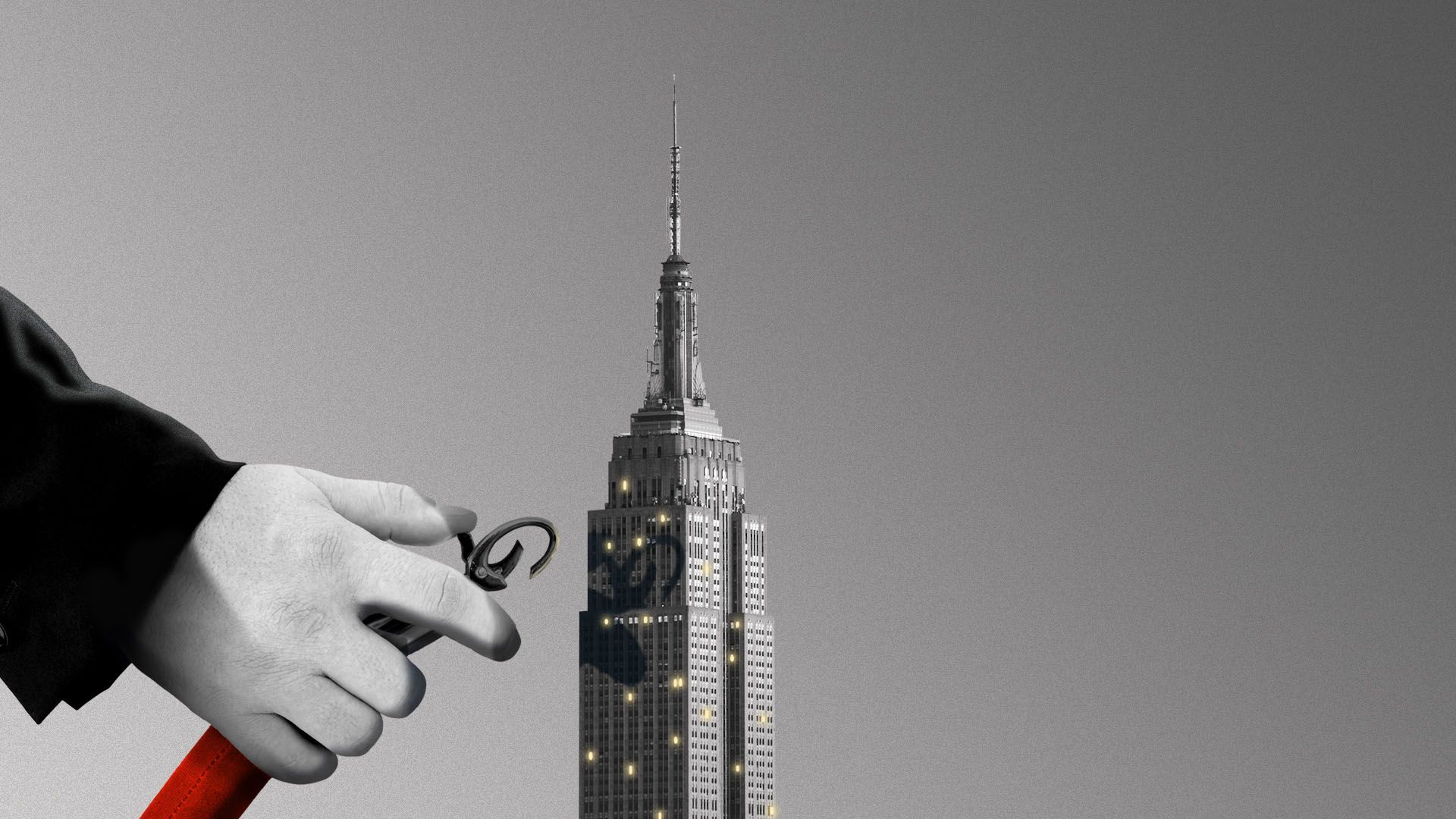
Illustration: Sarah Grillo/Axios
America's cities are facing a historic shortage of two vital resources: money and immigrants.
Why it matters: Cities drive American economic growth, and immigrants drive cities. The coronavirus pandemic has effectively stanched the main source of talent that municipal economies have long relied upon.
The big picture: As Axios' Stef Kight reports, COVID-19 has slammed the door on highly skilled foreign workers — and the restrictions and bottlenecks may outlast the pandemic, especially if President Trump wins reelection. Economists warn that could slow the U.S. recovery and reduce competitiveness.
- By the numbers: The U.S. issued more than 61,000 skilled visas in January. That number fell to just 494 in April and remained very low through July. Don't expect the numbers to pick up meaningfully anytime soon.
- New York alone has some 3.1 million immigrants, who fill 45% of the city's jobs, according to the Mayor's Office for Immigrant Affairs. But that population was declining even pre-pandemic. Tougher immigration restrictions caused a decline of 75,000 immigrant residents in 2018.
- Immigrants contribute $232 billion to New York City's GDP and own more than half of its businesses.
Other cities are just as reliant on immigrants. Miami is 58% foreign-born; Los Angeles, like New York, is at 37%.
Context: As I wrote today for Axios Cities, New York's recovery from the current crisis is going to be based on an influx of not-wealthy creatives and young professionals replacing the older, richer, more established people moving out.
- If the newcomers require less space per person than the people leaving, then so long as landlords don't leave apartments empty, the population will rise and the city will rebound.
- The catch: Historically, newcomers to New York and other cities have come from abroad. With intra-American migration slowing, it's not clear where else the reinforcements will come from.
The bottom line: I reviewed Matthew Yglesias' new book, "One Billion Americans," this week. While its titular goal is utterly unrealistic, it's also directionally correct.
- The U.S. needs a lot of immigration if it's to achieve its potential and thrive in the coming century. At the moment, thanks to the pandemic, the prospects for such immigration have never been grimmer.
Bonus: The fall and rise of New York City

Data: U.S. Census Bureau via New York City Department of City Planning; Chart: Andrew Witherspoon/Axios
New York's boom years, at the beginning of two successive centuries, coincided with its peak levels of immigration. Today, about 60% of New Yorkers live in a household with at least one immigrant.
- New York's 1970s nadir occurred when immigration to the city was at all-time lows.
2. Art market manipulation
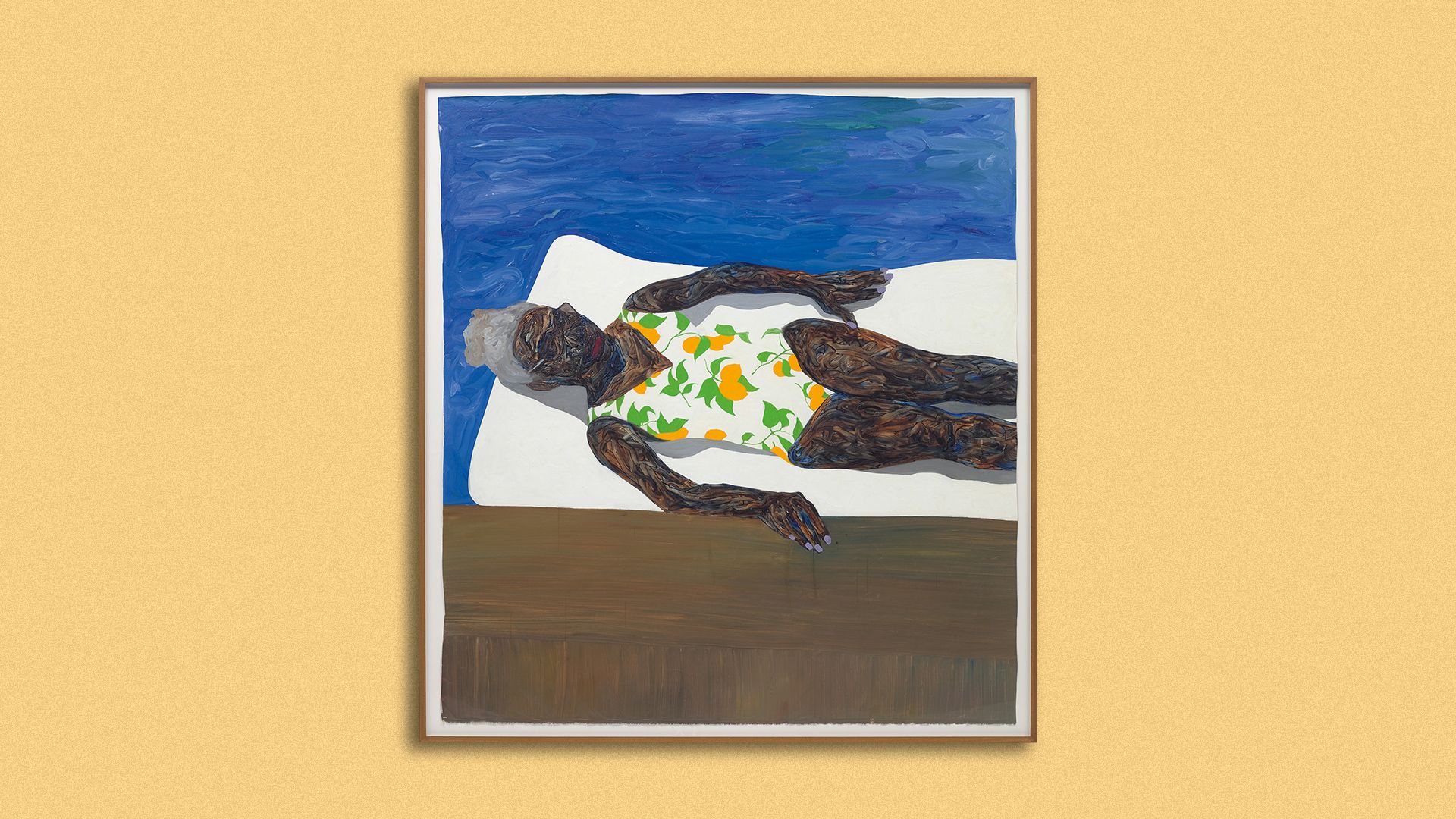
"The Yellow Bathing Suit": Bought for $22,500; sold, seven months later, for $880,971. Photo: Phillips
Stock market hucksterism has nothing on the art market — a place where no one should trust anything.
Why it matters: In a world characterized by extreme opacity, auction prices are the closest the art world has to terra firma — a public arm's-length transaction demonstrating just how much someone is willing to spend on a given artwork. Sometimes, however, they shouldn't be believed.
What we're reading: Artnet's Nate Freeman solves an art-world mystery in the latest issue of the Artnet Intelligence Report: How did a painting that was bought for $22,500 in the summer of 2018 end up selling at auction for $880,971 the following February?
- The mystery was heightened by the fact that the artist, Amoako Boafo, was an art-world newcomer who had never appeared at auction.
The hype around the price — more than 13 times the high estimate — immediately catapulted Boafo into the ranks of the buzziest artists in the world.
- Soon many more of his canvases would appear at auction, and even if none of them sold for more than $880,000, they all fetched well over $200,000 — cheap, if only in comparison.
Spoiler alert: It turns out that the initial auction — the one that caused all the buzz — was rigged.
- Two low-profile London-based collectors bought the piece, not because they thought it was worth $880,000, but because they had been promised $480,000 of art for it — by Boafo himself.
- In the months following the auction, the collectors sold that art for $644,500 — and they resold "The Yellow Bathing Suit," too, for about $300,000. They therefore ended up making a profit, despite losing some $580,000 on the painting that kicked off all the hype.
What they're saying: Phillips, the auction house, confirmed to Axios that it stands behind the $880,971 price as a legitimate auction record for Boafo.
Background: The New York Times this week raised its august eyebrows at some of the prices being paid at auction for young artists like Boafo, who's Ghanaian.
- Kenyan painter Michael Armitage, also 36, similarly burst onto the auction scene last year when his 2015 painting “The Conservationists” sold for $1.52 million, more than 20 times its high estimate.
The bottom line: Some painters will always find themselves caught up in a trendy moment ("zombie formalists" a few years ago; African figuration today).
- When art-world flippers start seeing quick profits, it's worth taking nothing at face value. Not even auction results.
3. The Chinese regulatory flex
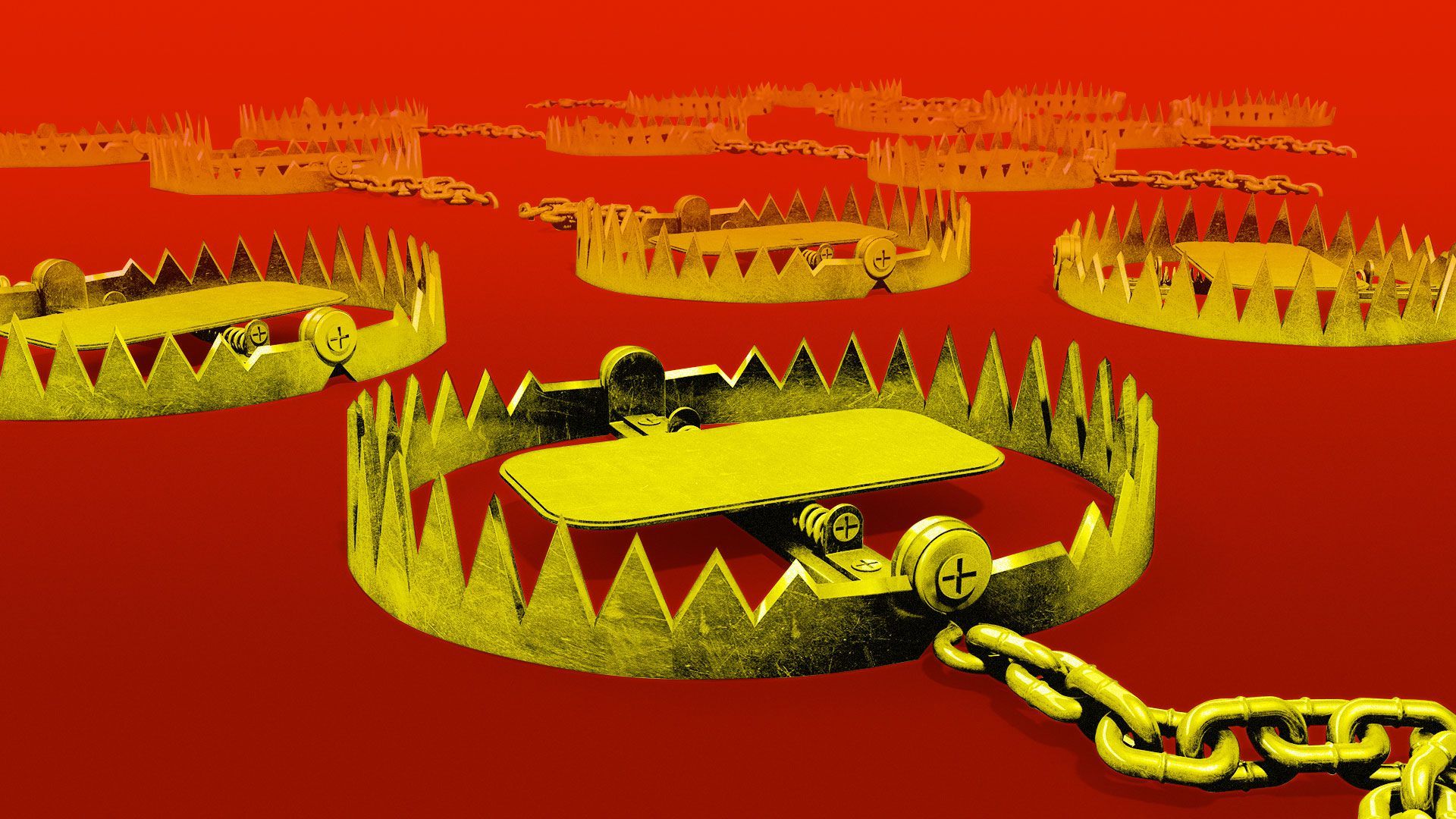
Illustration: Aïda Amer/Axios
All significant M&A transactions require regulatory approval. Now there's a new regulator in town.
Why it matters: We're in a tit-for-tat trade war, which means that any action the U.S. takes against China is going to be reciprocated by a similar action taken by China against America. That includes regulatory actions.
Driving the news: The auction for TikTok began when U.S. regulators forced China's ByteDance to sell any operations in the United States.
- Soon enough, China stepped in to scuttle a potential deal with Microsoft, saying that ByteDance was not allowed to sell the TikTok algorithm to an American company.
- China also has concerns about America's Nvidia buying the U.K.'s Arm Holdings from Japan's SoftBank. The Chinese press has started reporting that Chinese regulators might seek to block the deal, which, although it has no Chinese component, could have a significant effect on Chinese electronics manufacturers.
The bottom line: Few companies would want to unnecessarily antagonize China by entering into a deal that the Chinese government opposes. That gives Chinese regulators real power. And they're starting to use it.
4. Brexit: Going about as well as expected
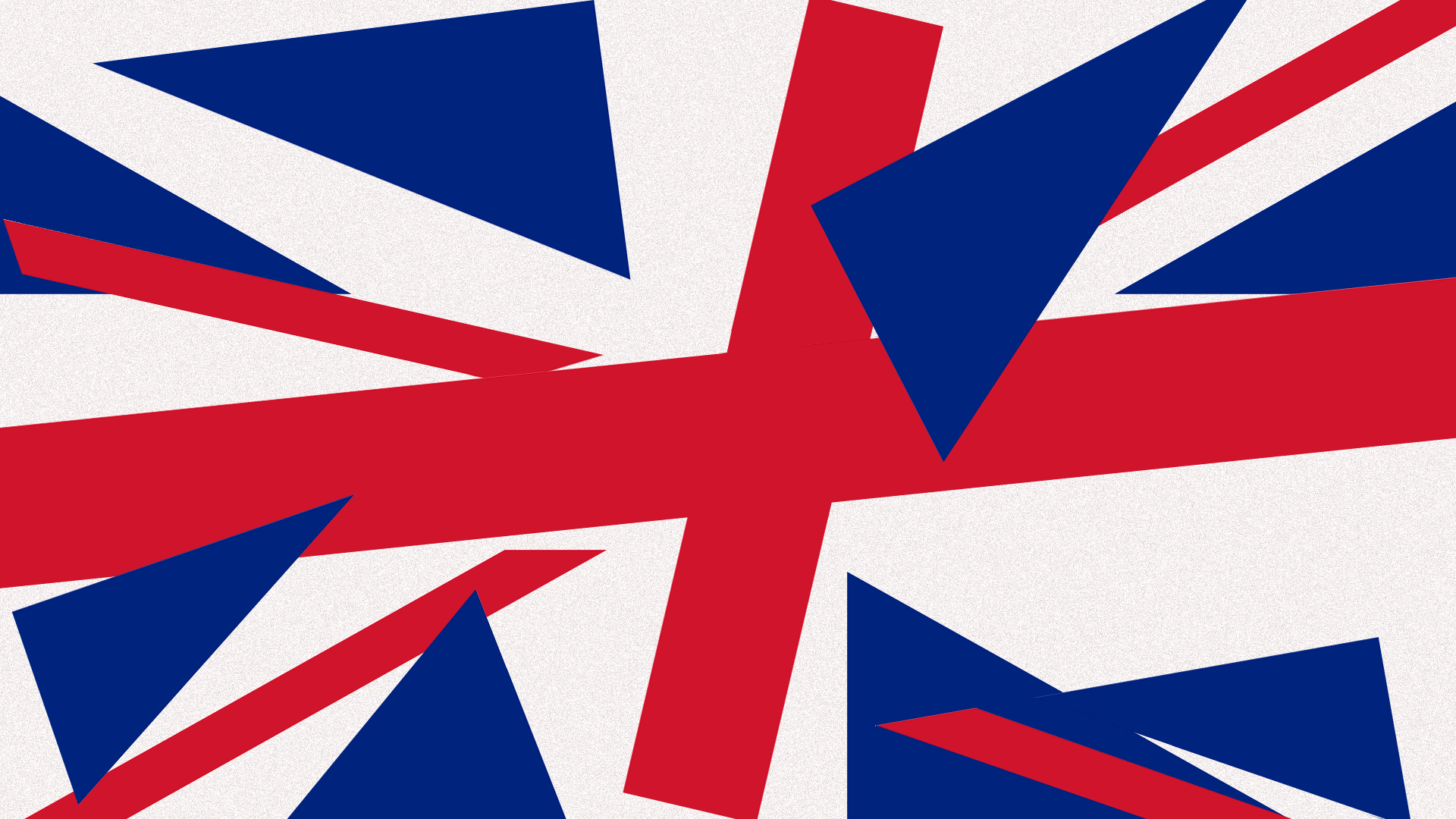
Illustration: Sarah Grillo/Axios
The Brexit omnishambles threatens to become a full-blown constitutional crisis, now that Boris Johnson's government has declared its intention to violate international law by breaking the very withdrawal treaty that Johnson negotiated, signed, declared a triumph, and ran on as the basis of his party's reelection.
For the record: Five former prime ministers have come out against Johnson's Internal Market Bill, which has already caused a slew of resignations from the government. The bill would allow the U.K. to unilaterally override the EU in a manner that explicitly violates Britain's treaty obligations.
- European Commission President Ursula von der Leyen quoted another former PM, Margaret Thatcher, saying that "Britain does not break treaties"; Germany's Brexit rapporteur declared that "Britain is joining the ranks of despots" like North Korea.
- American politicians of both parties, including Nancy Pelosi and Joe Biden, have said that if the bill is passed there is no chance of Britain signing a free trade deal with the U.S.
Context: The current crisis is an entirely foreseeable (and foreseen) consequence of the fact that Brexit is fundamentally impossible.
- Peace on the island of Ireland requires that there be no hard border between the Republic of Ireland, which is part of the EU, and Northern Ireland, which is part of the U.K.
- National unity means that there can be no customs or border controls between Northern Ireland and the rest of the U.K.
- The border between the U.K. and the EU has to go somewhere, however.
What's next: Johnson claims that his bill fulfills a manifesto commitment and that it must therefore be passed by the upper chamber of Parliament, the House of Lords. The Lords are likely to think otherwise.
Bonus: Investors' verdict on Brexit

Data: FactSet; Chart: Axios Visuals
The stock market has a clear answer to the question of which is worse, Brexit or Trump.
- Since the beginning of 2016, when both outcomes seemed conceivable but implausible, U.S. investors have seen their domestic stock portfolios rise by 65%. Their U.K. stocks, however, are down 15%.
5. Snowflake

Data: Factset; Chart: Andrew Witherspoon/Axios
Snowflake is the other kind of white-hot tech IPO. There's no visionary founder with control of the company; there's no consumer angle; few people can even really explain what the company does. (My advice: just mumble some words like "cloud data analytics" and change the subject.)
- It's also Warren Buffett's first IPO investment since Ford went public in 1956.
Snowflake has never made money since inception in 2012 — something that has necessitated a long line of ever-increasing funding rounds. Those rounds effectively diluted the three founders, who own very little of the company among them.
- The largest individual investors are not founders but rather the first and third CEOs, Mike Speiser and Frank Slootman.
- Slootman, who has stock and options in Snowflake worth about $4 billion, only joined the company last year.
Our thought bubble, from Axios' Dan Primack: Many investors are desperately seeking the next tech whale. With Oracle preoccupied with TikTok, maybe Snowflake could be the next Oracle.
Go deeper: Breaking down the Snowflake IPO
6. A new bar for wealth

Data: Census Bureau; Chart: Axios Visuals
If your household has an income of more than $200,000 per year, it was always in the top 10% — until 2019.
By the numbers: New data from the Census Bureau shows that the gap between the richest and everybody else widened to record highs in 2019.
- The minimum amount a household needed to earn to get into the top 10% of households, in 2019 dollars, was $201,150 last year — up 7.2% from 2018.
- The median household income was $68,703.
The bottom line: Real incomes for the top 10% grew by $13,519 in a single year. Real median household income has grown by roughly the same amount — $14,377 — since 1978.
7. Kodak shenanigans update
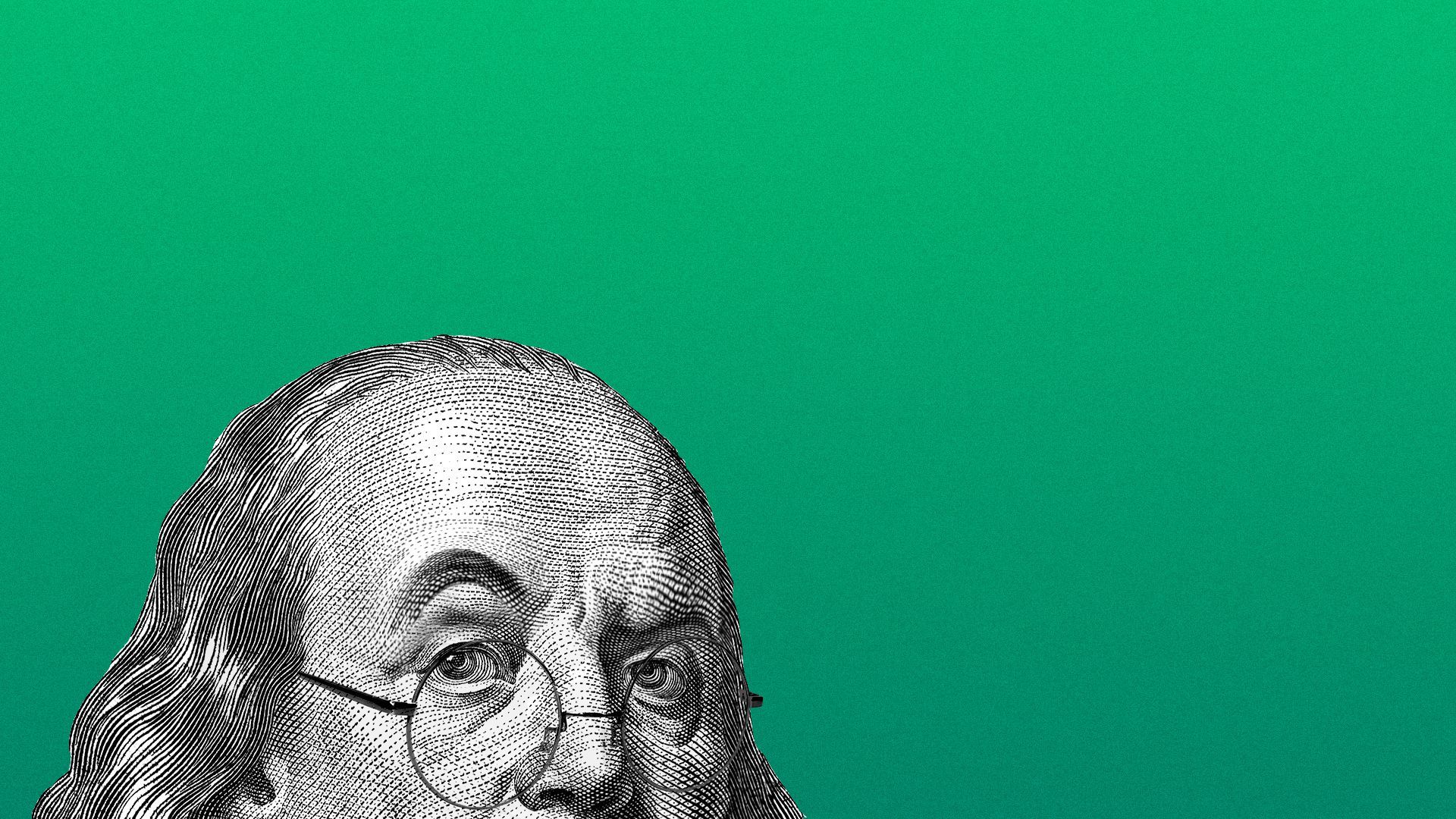
Illustration: Aïda Amer/Axios
Axios Capital regulars might remember when Kodak board member George Karfunkel donated 3 million shares of Kodak to a foundation where he serves as president and chief financial officer — a donation that looks like it might benefit Karfunkel more than it will the foundation.
The latest: Kodak's lawyers, Akin Gump, have issued their report into the suspicious transactions surrounding the spike in Kodak's share price in late June. And Karfunkel is far from exonerated.
What they're saying: Akin Gump says that they were "unable" to interview any of the officers of the charity, nor were they able to access its records — records that Karfunkel could easily have given them.
- "If a gift is not bona fide and is actually a disposition for value, it could be deemed a sale," say the lawyers, adding that their review did not "address the potential tax implications of the gift."
The bottom line: Insofar as Karfunkel received value from the gift in the form of some $116 million in future tax deductions, his donation could be deemed a fraudulent sale.
8. Coming up: Tesla's new battery
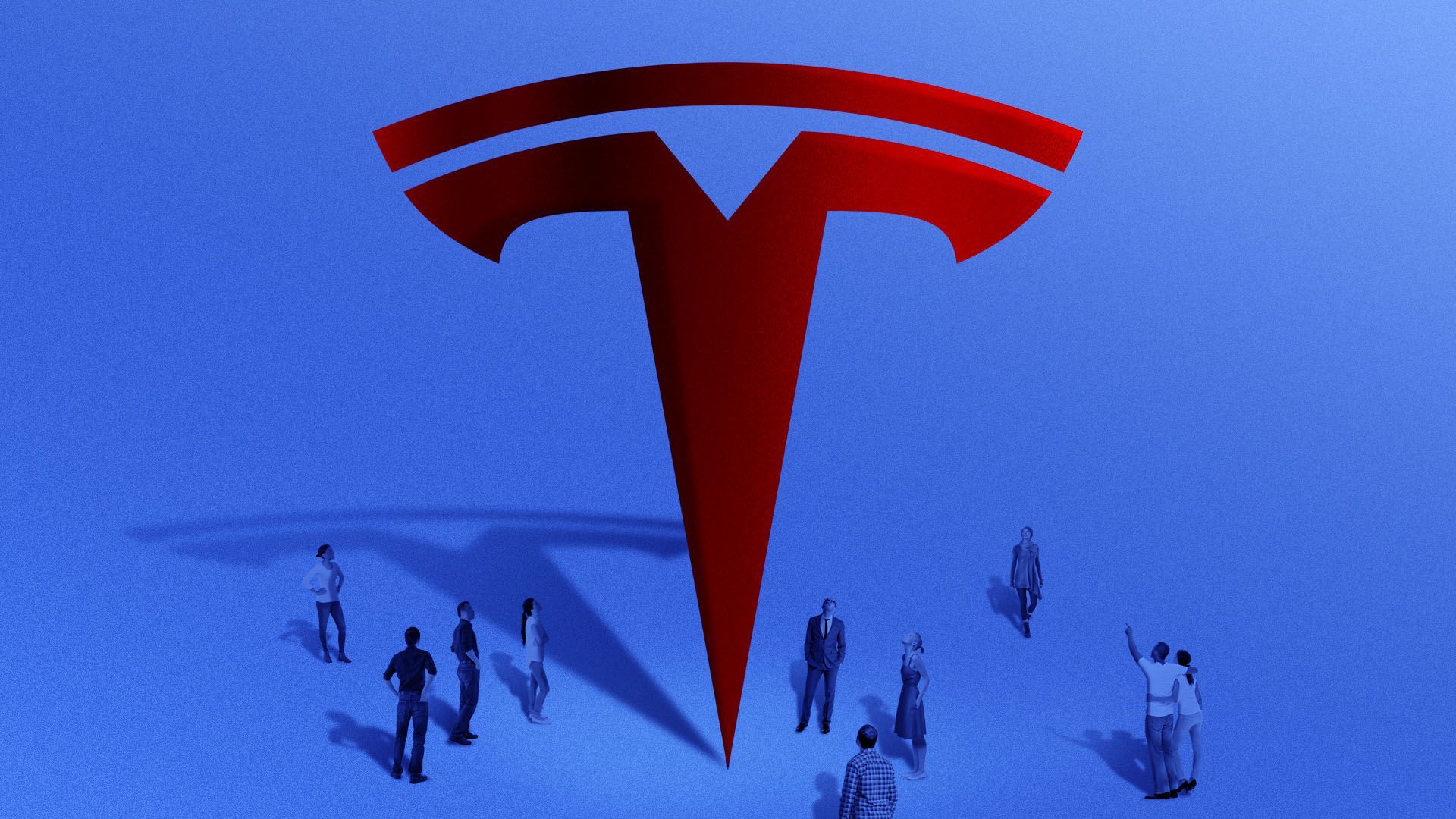
Illustration: Sarah Grillo/Axios
Tesla's "Battery Day" is on Tuesday. Elon Musk is expected to announce some significant battery breakthroughs that will pack more energy into a smaller package, Axios' Joann Muller writes.
Why it matters: The news would cement Tesla's competitive advantage for years to come. The battery upgrade would make electric vehicles cheaper to own, allow them to go farther between charges and last for up to 1 million miles.
- Wall Street has big expectations (perhaps fueled by Musk himself). Analysts seem to think those expectations will be met — at least if the price target hikes ahead of Tuesday are any indication.
9. Building of the week: Axel Springer Building, Berlin
Venerable German publishing house Axel Springer, one of the largest companies in Berlin, completed a stunning new building last year that was designed by Rem Koolhaas' Office for Metropolitan Architecture.
- The office building will house 3,500 employees and features a series of floors that open onto a massive central atrium.
- The ground floor is open to the public, as is the rooftop bar.
The location, on Zimmerstrasse, was in No Man's Land — the border between East and West — until Germany reunified.
Disclosure: None.



